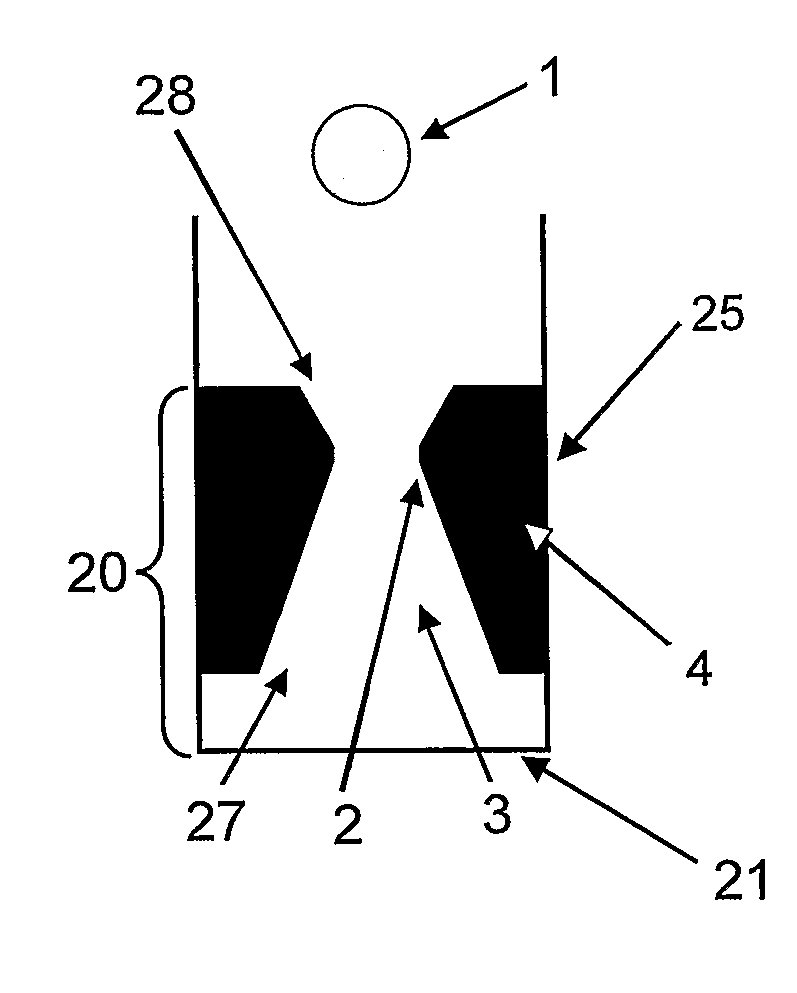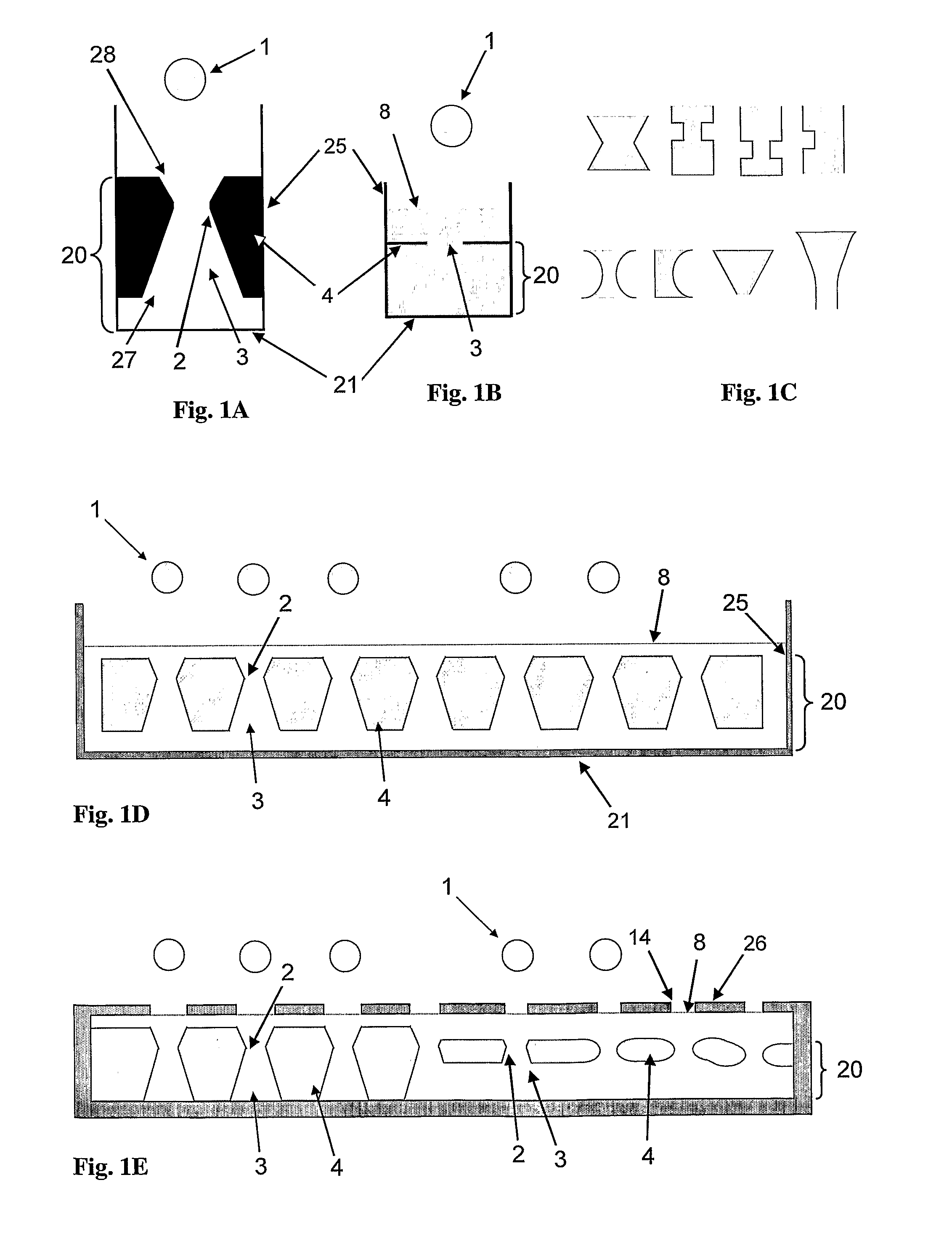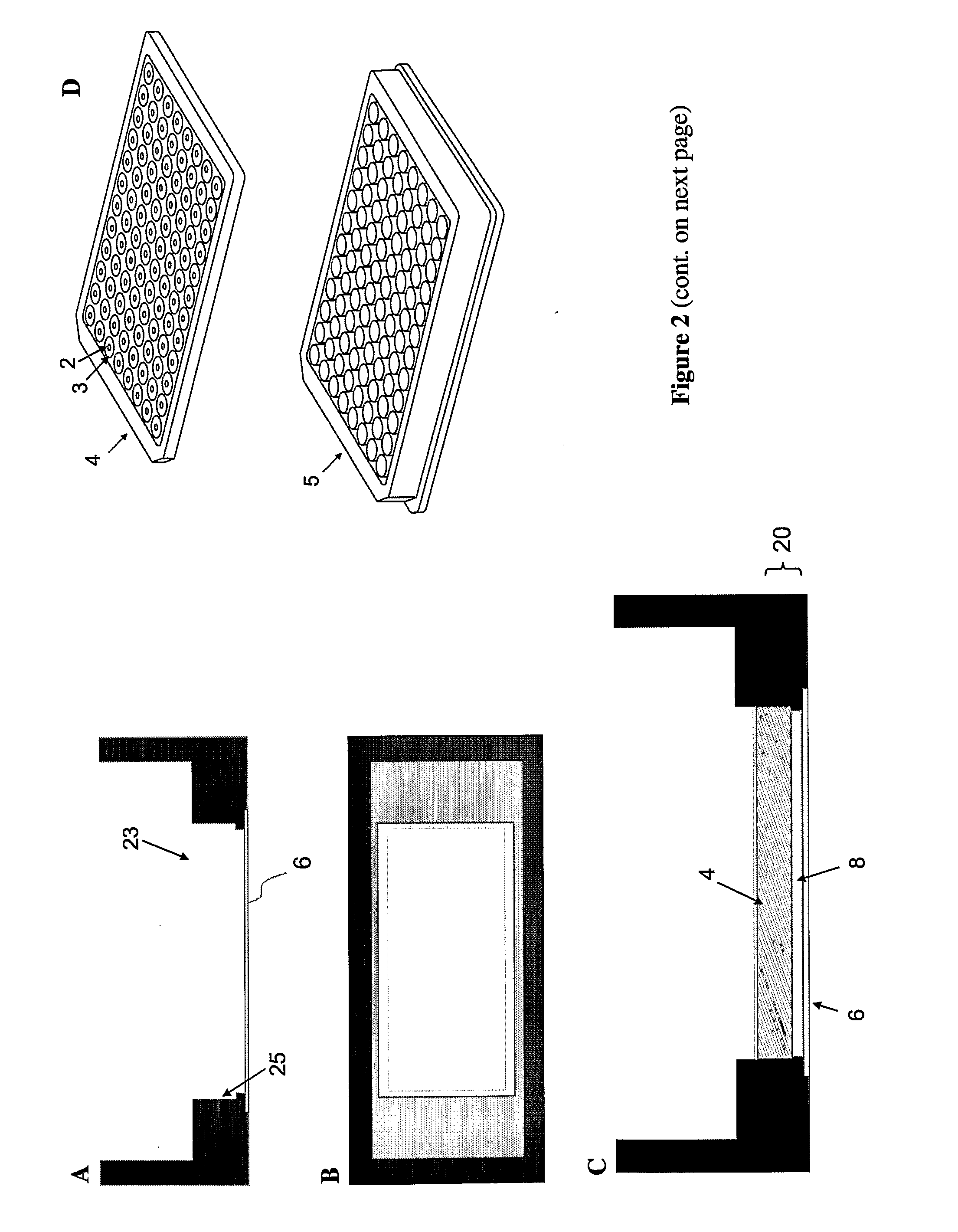Apparatus For Performing a Reaction In a Droplet and Method of Using the Same
a technology of apparatus and droplet, which is applied in the field of apparatus for performing a reaction in a droplet and a method of using the same, can solve the problems of limiting the freedom and flexibility of liquid handling for addition and mixing of different reagents, and not only the problem of protein adsorption
- Summary
- Abstract
- Description
- Claims
- Application Information
AI Technical Summary
Benefits of technology
Problems solved by technology
Method used
Image
Examples
example 1
Chip and Chip Holder of the Apparatus
[0114]The present example illustrates embodiments of a chip and a chip holder of a apparatus of the invention, in which a chip is positioned in a pocket of the holder and immersed in an immiscible medium. Depending of the liquid of the droplet and the immiscible medium used, the chip is made of an organic, inorganic or metallic substrate such as plastic, glass, silicon, or stainless steel, and has an array of droplet inlet channels of hour glass shape. The size of a model chip depicted in FIG. 2F is 37.8 mm×17.8 mm and has a 19×10 array of droplet inlet channels, which posses a maximum diameter of 800 μm and a contraction diameter of 300 μm. The profile of the droplet inlet channels corresponds to the first profile depicted on the upper left of FIG. 1C. A further chip has an array of droplet inlet channels of cylindrical shape, where the diameter of droplet inlet channel varies throughout the chip. The respective profile corresponds to the second...
example 2
Liquid Handling
[0116]The immiscible medium may be a liquid, which is dispensed into the reservoir of a chip holder (cf. Example 1) so that it just fills half of the reservoir. Immiscible liquid can be mineral oil, silicone oil or perfluorocarbon liquid with or without appropriate hydrocarbon or perfluorocarbon surfactants. In most tests a perfluorocarbon liquid containing 0-10% perfluorocarbon-ethylene glycol surfactants was used. More specifically, perfluorocarbon liquid can be perfluorodecalin or Fluorinert™ available from 3M. The perfluorocarbon-ethylene glycol surfactant can be a compound with a structure of CF3(CF2)m—(CH2)n—(OCH2CH2)k—OH, in which m is an integer from 3 to 100, n is an integer from 0 to 10, and k is an integer from 1 to 200. In the compounds used typically m was an integer of 7-9, n an integer of 1-4 and k an integer of 1-200 (cf. Roach et al. supra, in particular the ‘supporting information’). Upon addition of perfluorocarbon liquid, a chip is placed in a pock...
example 3
Electric Field for the Handling of Droplets
[0119]An electric field, including an electrostatic field, is a typical method for controlling a droplet in a perfluorocarbon liquid. Electrodes can be configured in many ways depending on the specific needs. In one configuration, an electro-chip with a footprint identical to an array of droplet inlet channels is placed on a sample chip and used as an electrode (FIG. 4C). The electro-chip can be made of a metal such as aluminium or stainless steel or a non-metal such as glass or silicon with metal coating. The other electrode of a flat slide is placed underneath a chip holder. The voltage applied to an electrode varies depending on the distance between the electrodes and the sizes of the droplet and droplet inlet channel. In general, a higher voltage is required as (a) the distance between electrodes increases, and as (b) the ratio of droplet size over neck diameter of a droplet inlet channel increases. For example, a voltage of 3 kV is req...
PUM
| Property | Measurement | Unit |
|---|---|---|
| volume | aaaaa | aaaaa |
| volume | aaaaa | aaaaa |
| volume | aaaaa | aaaaa |
Abstract
Description
Claims
Application Information
 Login to View More
Login to View More - R&D
- Intellectual Property
- Life Sciences
- Materials
- Tech Scout
- Unparalleled Data Quality
- Higher Quality Content
- 60% Fewer Hallucinations
Browse by: Latest US Patents, China's latest patents, Technical Efficacy Thesaurus, Application Domain, Technology Topic, Popular Technical Reports.
© 2025 PatSnap. All rights reserved.Legal|Privacy policy|Modern Slavery Act Transparency Statement|Sitemap|About US| Contact US: help@patsnap.com



